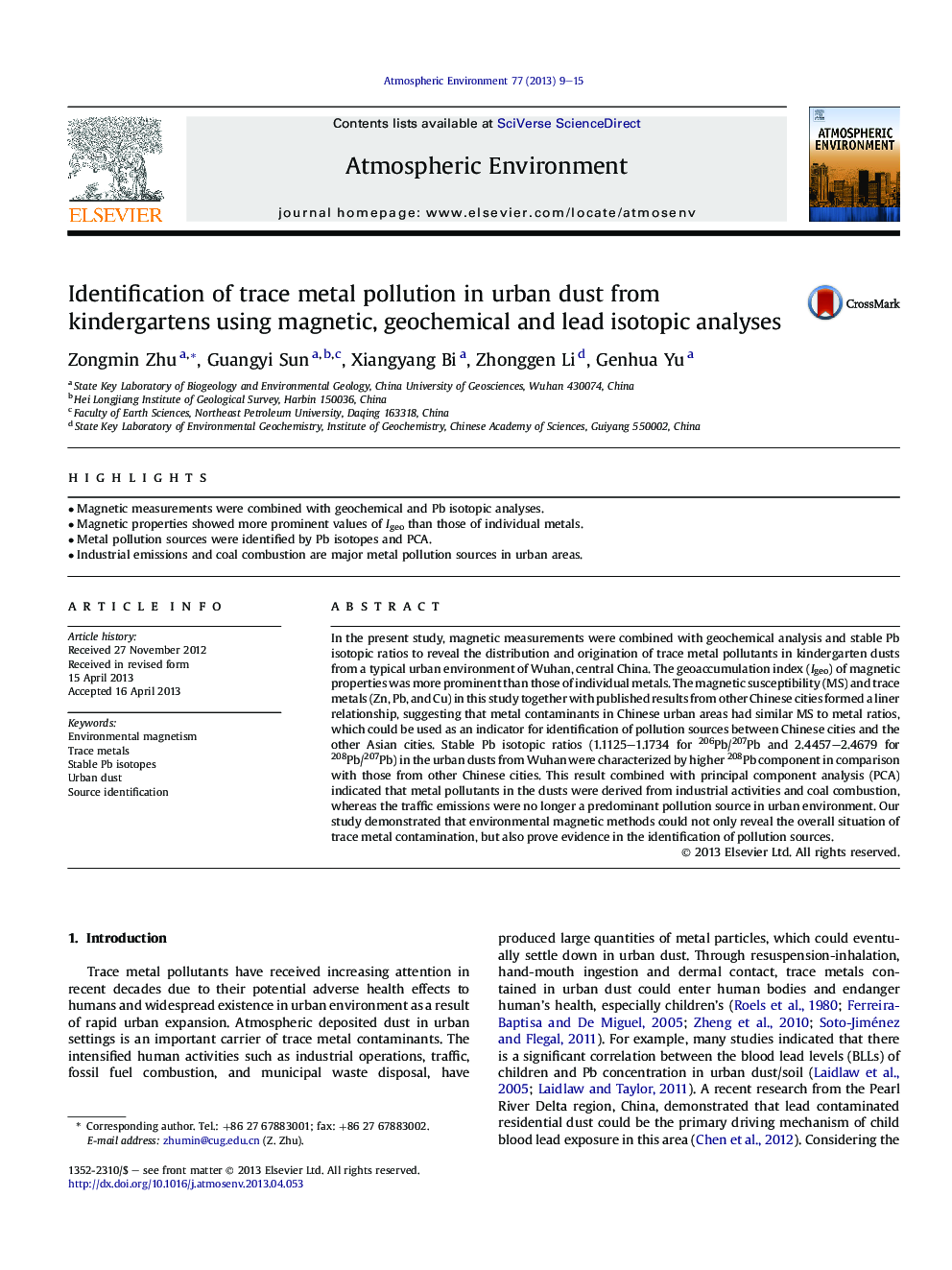| Article ID | Journal | Published Year | Pages | File Type |
|---|---|---|---|---|
| 6341150 | Atmospheric Environment | 2013 | 7 Pages |
Abstract
In the present study, magnetic measurements were combined with geochemical analysis and stable Pb isotopic ratios to reveal the distribution and origination of trace metal pollutants in kindergarten dusts from a typical urban environment of Wuhan, central China. The geoaccumulation index (Igeo) of magnetic properties was more prominent than those of individual metals. The magnetic susceptibility (MS) and trace metals (Zn, Pb, and Cu) in this study together with published results from other Chinese cities formed a liner relationship, suggesting that metal contaminants in Chinese urban areas had similar MS to metal ratios, which could be used as an indicator for identification of pollution sources between Chinese cities and the other Asian cities. Stable Pb isotopic ratios (1.1125-1.1734 for 206Pb/207Pb and 2.4457-2.4679 for 208Pb/207Pb) in the urban dusts from Wuhan were characterized by higher 208Pb component in comparison with those from other Chinese cities. This result combined with principal component analysis (PCA) indicated that metal pollutants in the dusts were derived from industrial activities and coal combustion, whereas the traffic emissions were no longer a predominant pollution source in urban environment. Our study demonstrated that environmental magnetic methods could not only reveal the overall situation of trace metal contamination, but also prove evidence in the identification of pollution sources.
Related Topics
Physical Sciences and Engineering
Earth and Planetary Sciences
Atmospheric Science
Authors
Zongmin Zhu, Guangyi Sun, Xiangyang Bi, Zhonggen Li, Genhua Yu,
